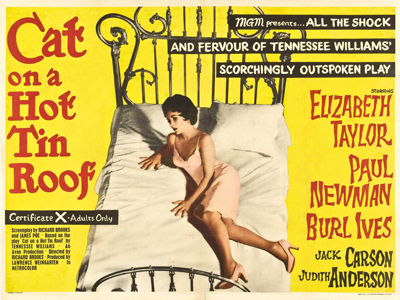|
|
Classic Movie Review: Cat on a Hot Tin RoofBy Clint ChirpichNovember 8, 2016
The music, what little there is, is one of the only failings of Cat on a Hot Tin Roof. Since there was a union musicians strike going on at the time, the film wasn't able to get its own personalized score and instead had to use bits of pre-existing music. This in of itself isn't a bad thing, but the way the music was used is what bothered me. For the vast majority of the film, there is no background music at all. When there is music, it swells melodramatically to underscore an emotional moment in the narrative. Very few things irk me as much as cheesy, over the top, unsubtle music. It's especially noticeable in Cat on a Hot Tin Roof as the music kicks in right at the emotional part, as if the audience wouldn't know to be moved by what's onscreen without a forceful nudging from the soundtrack. The music doesn't last long enough to be overbearing, but it's rather obviously manipulative. Honestly, I would have preferred no music to what was actually used. When I watch a film, I'm much more concerned with the writing - including plot, characters, and dialogue - and the acting performances than with any of the other more technical aspects of filmmaking, so a film like Cat on a Hot Tin Roof is right up my alley. There are no fistfights or explosions, but it's still an exciting film. There's no nudity or sex, but it's still an unbelievably sexy film. And there's nothing otherworldly, exotic, or magical, but it's still a captivating, intriguing film that I hope to return to several more times. Today, I rarely hear or read anything about it, which is a shame. I think if more people gave it a chance, they'd really enjoy it as I have. I wish someone would have urged me to check it out sooner. Consider yourself urged.
[ View other Classic Movie Reviews ]
[ View other articles by Clint Chirpich ]
[ Email this column ]
|

|
|
|

|
Friday, November 1, 2024
© 2024 Box Office Prophets, a division of One Of Us, Inc.


